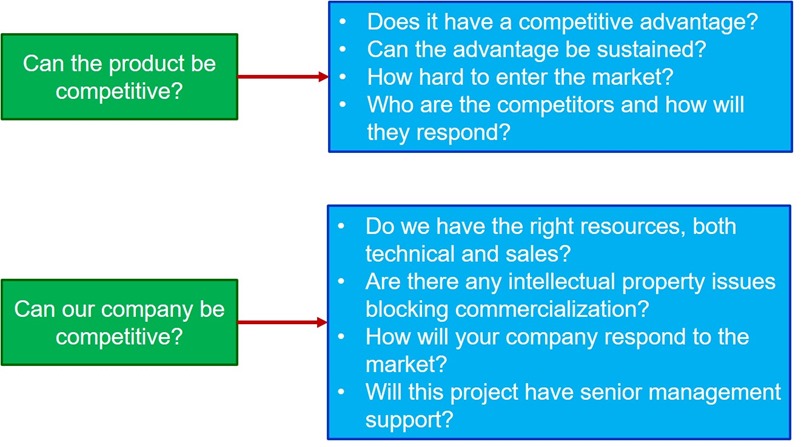In our June 6, 2016 post the Real Win Worth (RWW) Assessment was introduced (1). This is a very useful tool for a new product development team to work through early in the development process. The tool asks three key questions related to the proposed new product:
- Is It Real?
- Can We Win?
- Is it Worth It?
In this post we will dive deeper into the the second question, “Can We Win?’
Like the “Is It Real” question discussed last week, the Win question also has two categories; can the product and the company be competitive.
- Who are the major competitors?
- How many competitors offer the same of similar products?
- How would a competitor respond to the new product?
- How hard will it be to enter the market?
- What are some of the barriers to entry? (things that prevent the new product from successfully capturing market share with the new product)
- Do we have the right sales resources and channels to market
- Would current key customers be ready and eager to buy the new product
- What does the intellectual property landscape look like?
- Are there key patents that block you from developing a new product?
- What competitors hold the key patents?
- Do the material suppliers in this space patent their technology or keep as trade secret?
- Do you have the right R&D resources for this particular project?
- Are the R&D resources available for this particular project?
- Will this project have senior management support?
As mentioned in the last post, during the early stages of new product development, you may not have exact data for some of the questions. Do the best you can. When there are questions where you don’t have all of the data or don’t have good information, then note that as an action item in the gap analysis. good way to work on answering the three questions is to get the team either in one place or on a conference call. Having sales and marketing, R&D, engineering, and manufacturing resources working together helps to make the exercise more effective. It is common not to have all of the answers readily available, just note that in the action items in the gap analysis. Once the gap analysis is completed for all three questions, assign resources and a timeline to get the additional data needed. In the next post we will address the final question; Is It Worth It?
References:
1) George Day, Harvard Business Review, December 2007


Leave a Reply